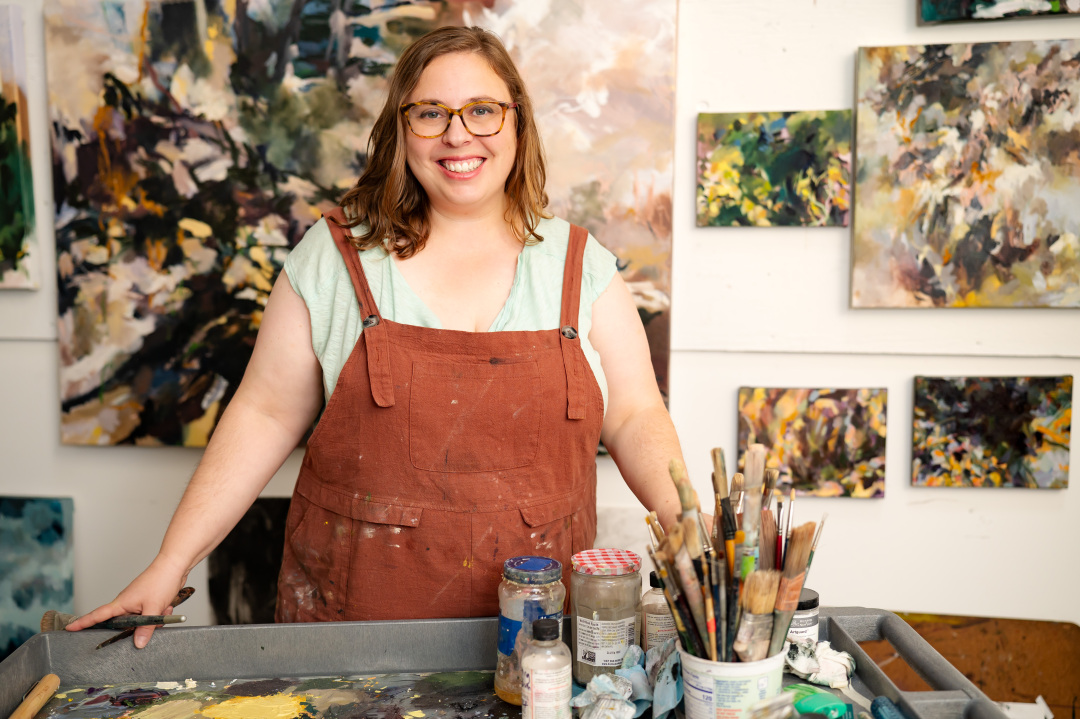We’re excited to introduce you to the always interesting and insightful Rebecca Howell. We hope you’ll enjoy our conversation with Rebecca below.
Rebecca, thanks for taking the time to share your stories with us today Was there an experience or lesson you learned at a previous job that’s benefited your career afterwards?
Before I made the transition to painting and teaching full time, I worked at the Delaware Art Museum for 14 years, eventually leaving my role as the Manager of Studio Learning & Creative Engagement in 2023 to launch my full time creative business. When I began my journey in museum education it seemed a worthwhile and fun detour from my studio aspirations, and over time, I realized I was gaining many skills that would become an essential part of my studio practice and art career.
While managing the museum’s studio art program (essentially a studio center attached to an art museum), I not only developed a greater fluency in diverse studio practices due to the many mediums represented — ceramics, metalsmithing, photography, painting, and more — I also worked alongside an exceptional and diverse cadre of professional teaching artists. Not every artist is a great teacher, and not every teacher is a great artist, but these individuals were undoubtedly both! They taught me the importance of connection in creativity, instilled a deep love of learning in community, and over the years I developed my own teaching pedagogy centered on skill building alongside community building.
While absorbing skills to use in my future teaching practice, at the museum I was also exposed to an institution whose mission is art. Through the institutional perspective, I learned how museums install, curate, acquire, and program around art. I learned about funding and grants, and how institutions interact with contemporary artists. I worked with smart, dedicated, and creative museum professionals who help make art relevant and accessible to the public. This exposure helped me to understand some of the infrastructure of being a professional artist — from seeking grants that support my practice, to creating polished presentations and external-facing communications like emails and websites, and how to budget for an artistic vision. It also helped me to understand the huge network of individuals who support artists and advocate on their behalf.
Lastly, I learned to talk to a huge variety of people about art. Whether it was taking fourth graders on a museum tour, working with an exhibiting artist to present a workshop related to their work, or speaking with funders about the connection between viewing art and creating art. I spoke about sculpture with veterans, followed Spanish-language tours, and made color studies alongside toddlers. I learned something every time. I consider it a privilege to have been on an art journey with each person I interacted with, and I believe that art has a place in everyone’s life.
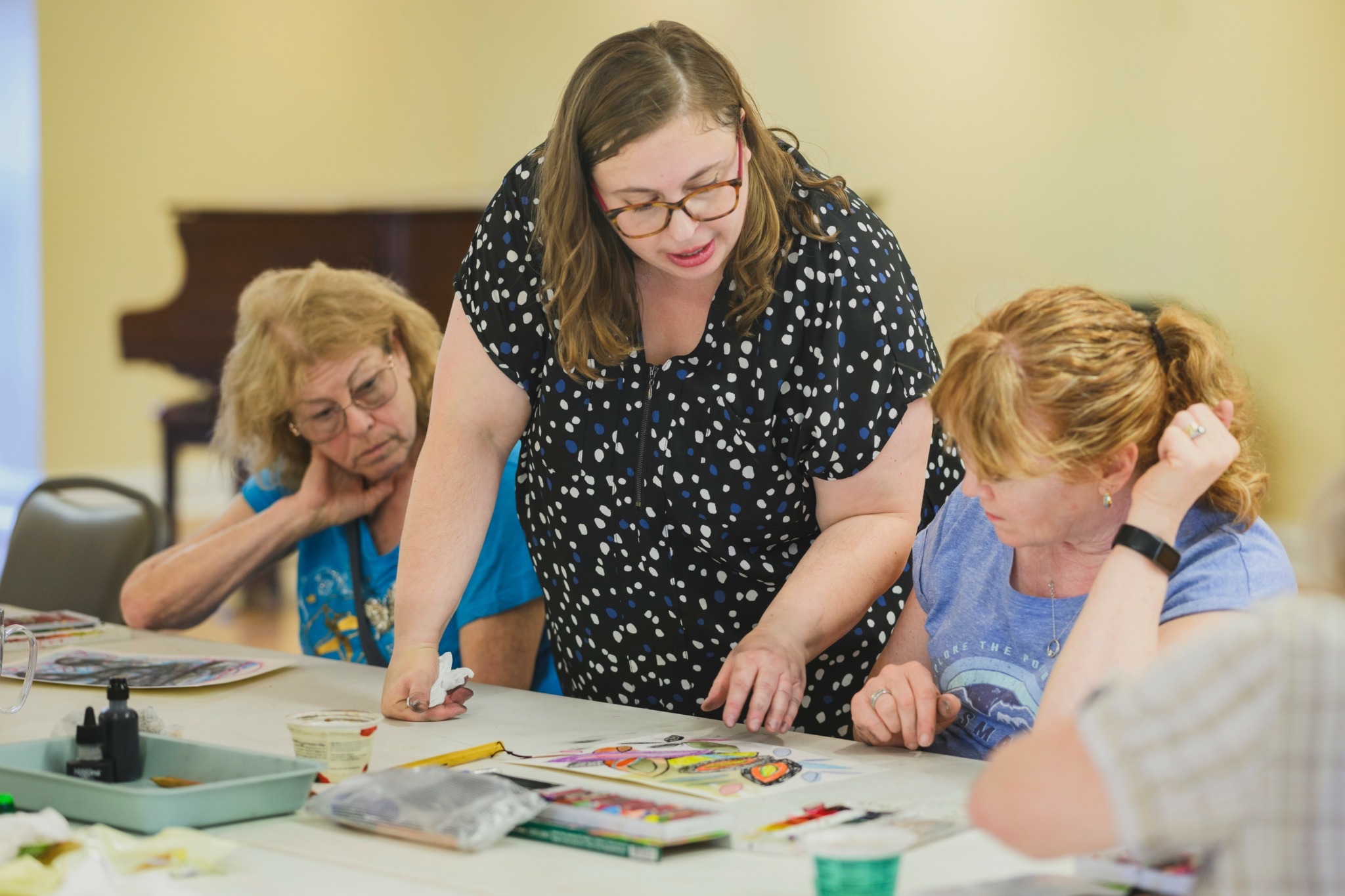

Great, appreciate you sharing that with us. Before we ask you to share more of your insights, can you take a moment to introduce yourself and how you got to where you are today to our readers.
I am an artist based in Wilmington, Delaware. I earned my BFA at the Savannah College of Art and Design, where I later oversaw sales in multiple galleries. I have the pleasure of working with artists and innovators every day as an arts educator and community connector while maintaining a studio practice.
I deconstruct the landscape to capture ephemeral moments. Each piece I create is a meditative practice, executed in communion with nature, and crafted through a personal language of marks. I explore the intrinsic beauty of nature while investigating the language of paint. These marks represent my own personal calligraphy of the natural world, and I offer viewers a chance to process life’s fleeting moments as we navigate the continuous cycle of seasons and emotions.
I am especially interested in exploring the earth’s changing seasons. Working from either direct observation or studies made on site, I infuse atmosphere and mood in my paintings by focusing on shape, line, and value that explore forms and scenic movement, documenting my experience with all of my senses. The process becomes an intuitive conversation with the canvas — pouring and glazing, drawing fresh lines, layering paint and scratching back through to previous iterations, revealing not only the pentimento of the work itself but also honoring the layering of experiences that form us as individuals. An act of introspection and celebration, my artistic practice is a convergence of art, nature, and the human experience.
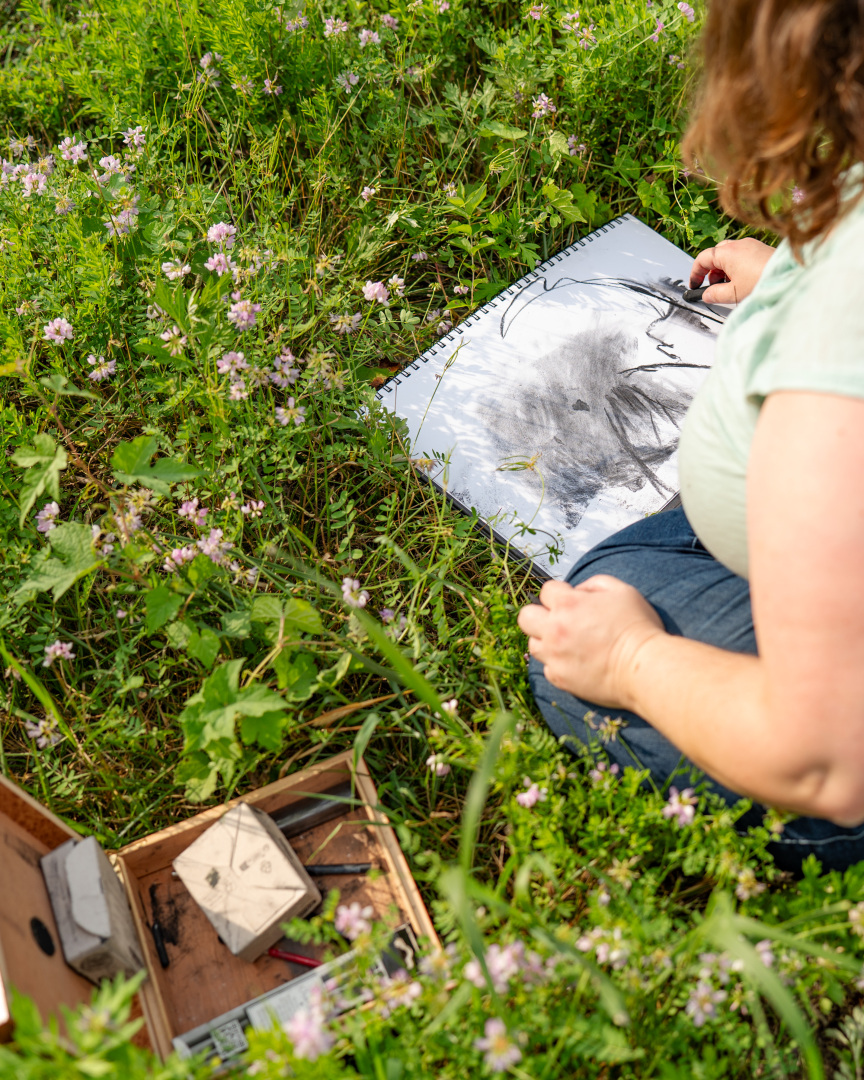

We’d love to hear a story of resilience from your journey.
This is a story of resilience that has not yet concluded. A few months ago, I suffered a medical emergency that resulted in a permanent vision impairment. My jaw dropped when the doctor told me that my sight would never be fully restored. “But I’m an artist,” I said.
Since then, I’ve seen a whole host of doctors and occupational therapists who assure me that my brain will learn to compensate for the section in my left eye that now lacks sight. When I left the hospital, it was too painful to even look out the window while being driven home, and I had to spend most of the daytime in darkened rooms. The best advice I received was “rest as much as possible” because my eyes and my brain were working really hard to understand my new reality.
After a few days, I felt brave enough to enter my studio, and I would be lying if I told you I didn’t cry when I attempted to look at my paintings. I knew what was supposed to be there, but I could not fully see them. It was heartbreaking to not be able to register the subtle shifts in color or pockets of layered marks that I delight in making. I would also be lying if I told you I am not stubborn. I started by working with the lights off, wearing an eye patch, and doggedly drawing while taking breaks. Sometimes just an hour in the studio would exhaust me for the rest of the day, and I stopped looking at my painting wall because it made me too sad.
One day, I realized I had only been making abstract drawings so I pulled out a book and began to copy a figure painting. I was slow but successful! What a relief to draw something familiar — I know how the body is supposed to fit together, so I could correct it even if my eye could not fully see it. Some time later, I happened to glance at the painting wall I had been purposefully ignoring. My heart soared when I recognized my old friends! I practically leapt at my neglected palette, squeezing out paint, peeling back the dried layer on my oil bars, rejoicing in the scent of linseed oil and the familiar tapping of my palette knife on glass.
It has become an exercise in patience and acceptance. I have not painted any masterpieces since my vision loss, but I am looking forward to learning to see again by expanding my understanding of the visual world in a way I never could have predicted, making me hopeful that there will be masterpieces in my future.
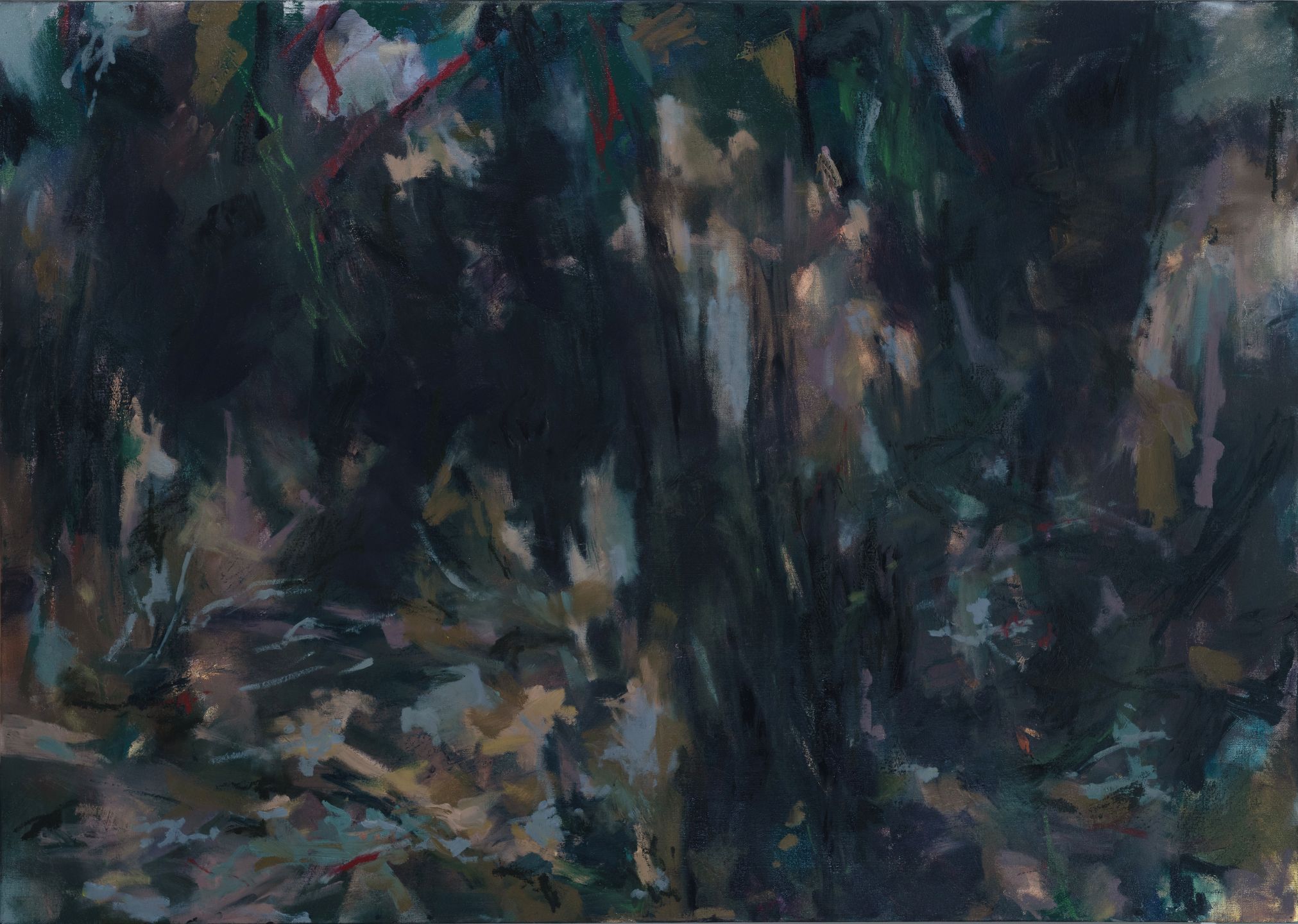
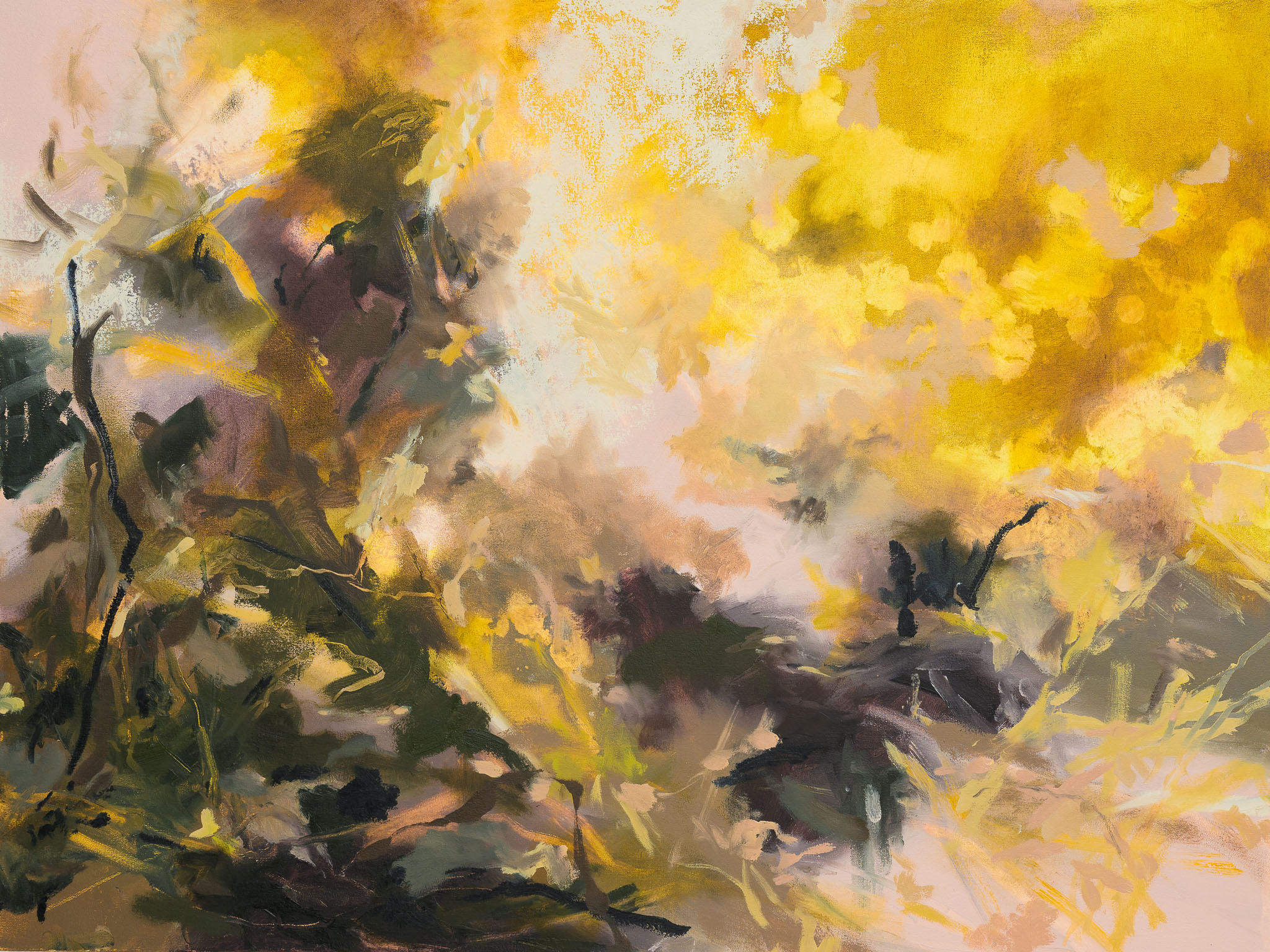
What’s the most rewarding aspect of being a creative in your experience?
Almost 20 years after graduating from art school, I am still delightfully astonished by finding my home in artistic communities time and again. No matter where I live or travel, there is always a community of people I will have something in common with. Each stage of life has been greeted by the arts community, forming touchpoints on the map to help me find my way.
In the early days of motherhood, the messy, isolating days where many of us experience a loss of self, I found myself sketching in little spurts to help keep myself grounded. I sketched a few times on location with artist friends and felt revived. Eventually, we went on to found Urban Sketchers Delaware, a local chapter of an international sketching organization. I have met wonderful people and sketched all over the state because of it. It also helped keep my observation skills sharp for when I was ready to delve deeper into my studio practice.
In the deep days of the covid-19 pandemic, I signed up for a virtual retreat with people from all over the world run by the Artist/Mother Podcast. Imagine my surprise when another participant from Wilmington, Delaware popped up on a little zoom square. Fast forward a few years and we have curated exhibits together, shown alongside each other, and become studio mates as part of the collective The Ladies Art House.
These are just two small examples of connecting to an artistic community, but that community is deep, wide, and ready to engage. I am thankful for it.
Contact Info:
- Website: https://www.rebeccahowellstudio.com
- Instagram: @rfwhowell
- Linkedin: https://www.linkedin.com/in/rfwhowell
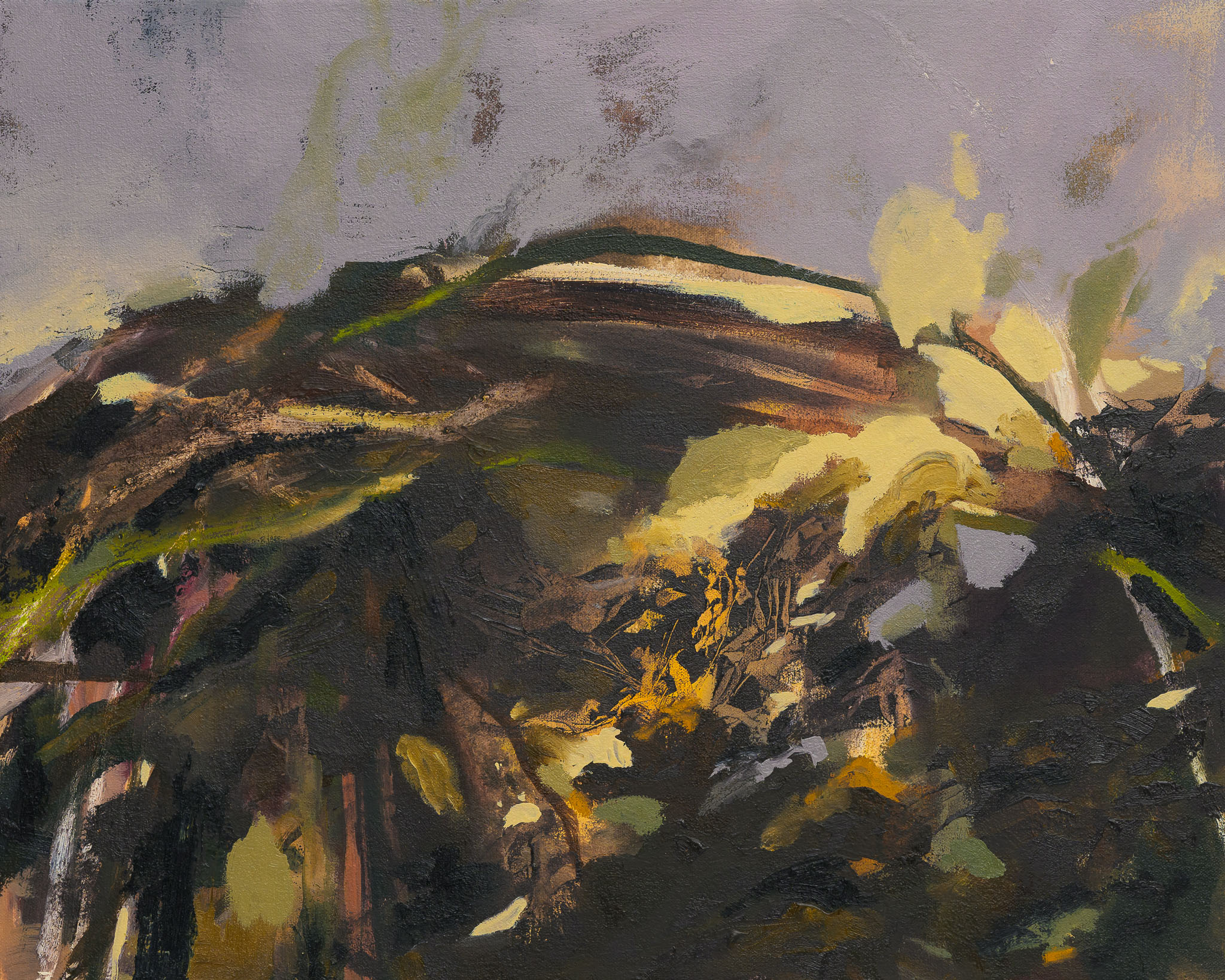

Image Credits
studio portrait – Jen Polillo Studios
teaching portrait- Moonloop Photography
palette – Jen Polillo Studios
drawing outside – Jen Polillo Studios
“Almost Time to Rest” – Carson Zullinger
“Sous Bois” – Carson Zullinger
“Looking Forward” – David Heitur
“Burrow” – David Heitur
“Cold Sky, Warble” – David Heitur


